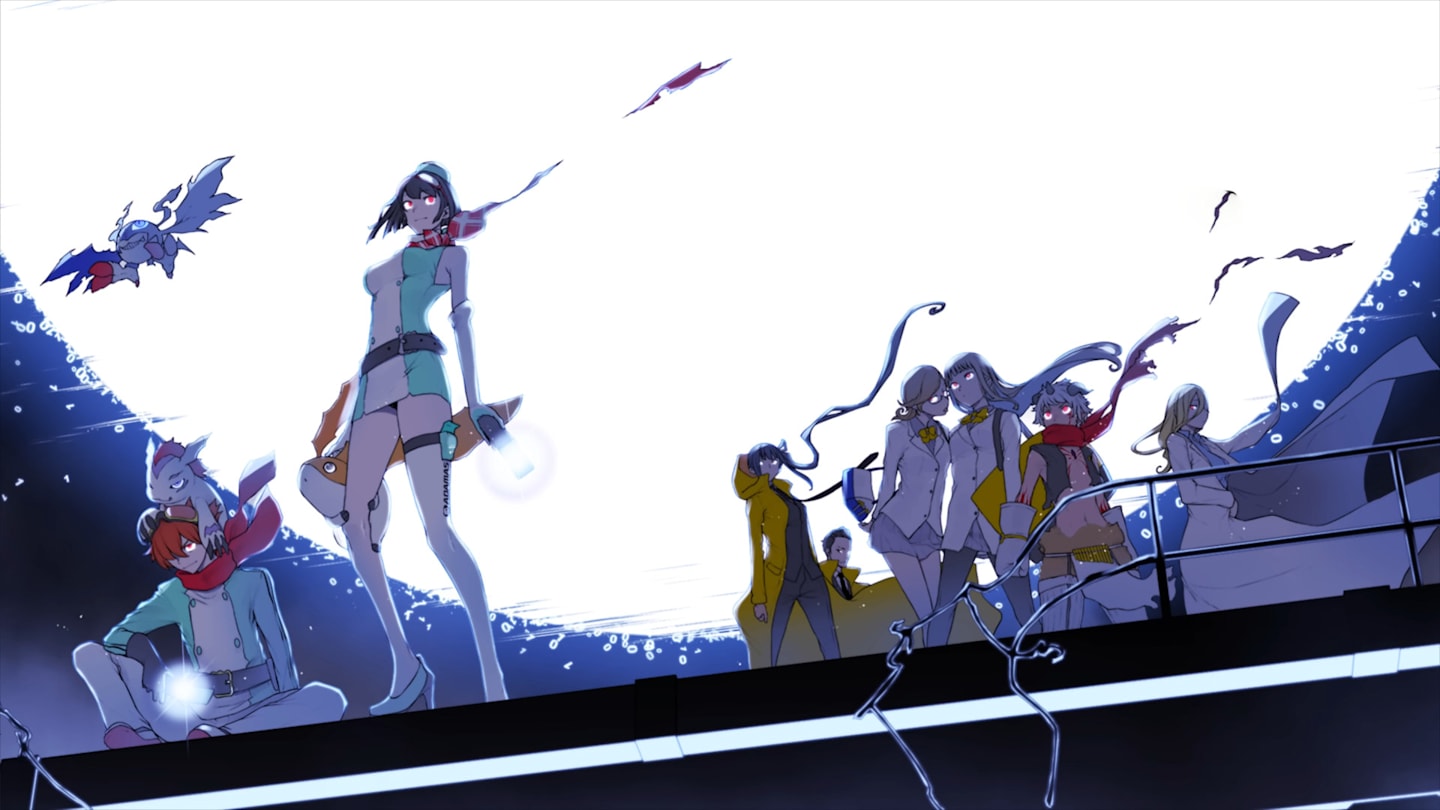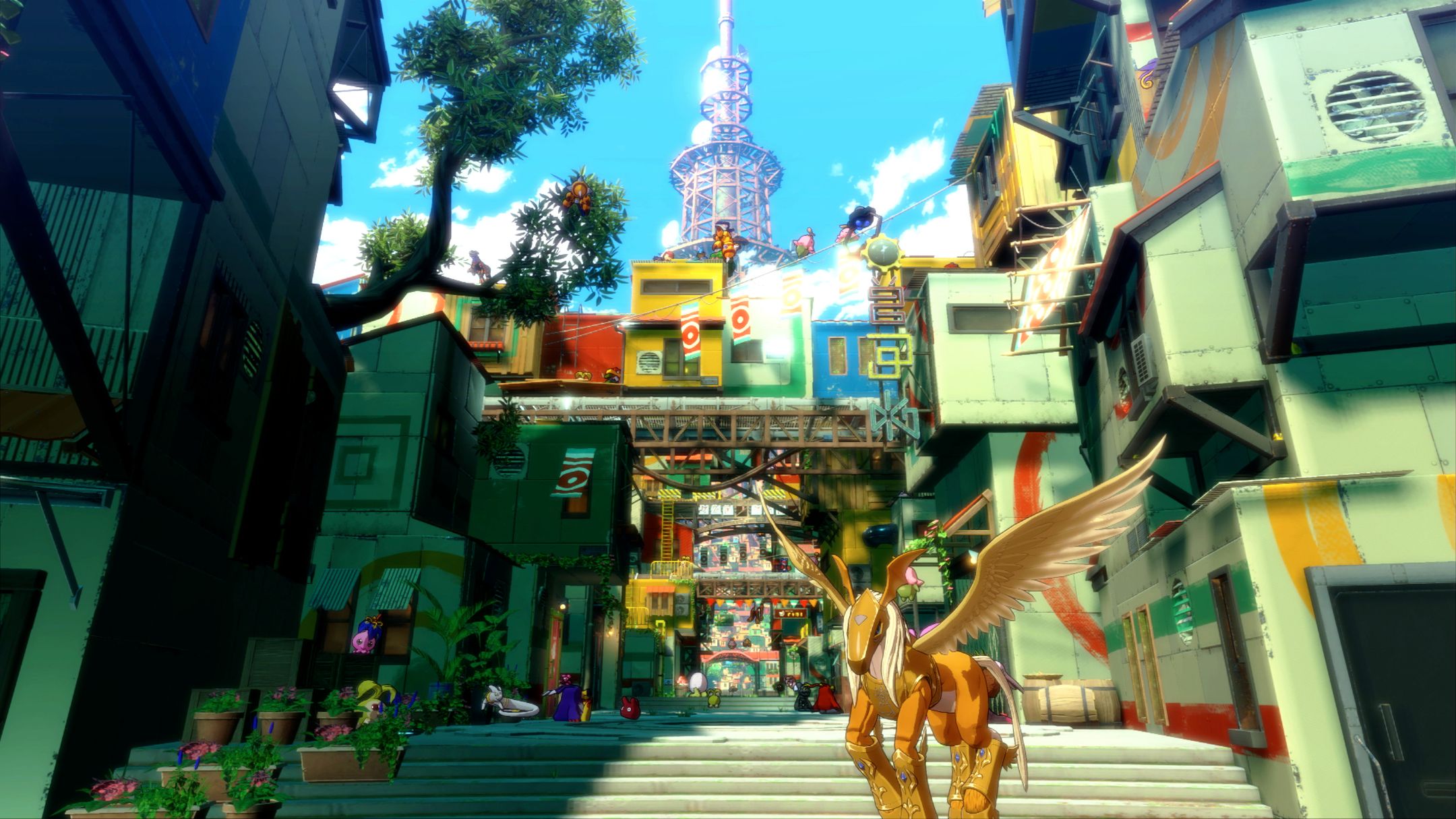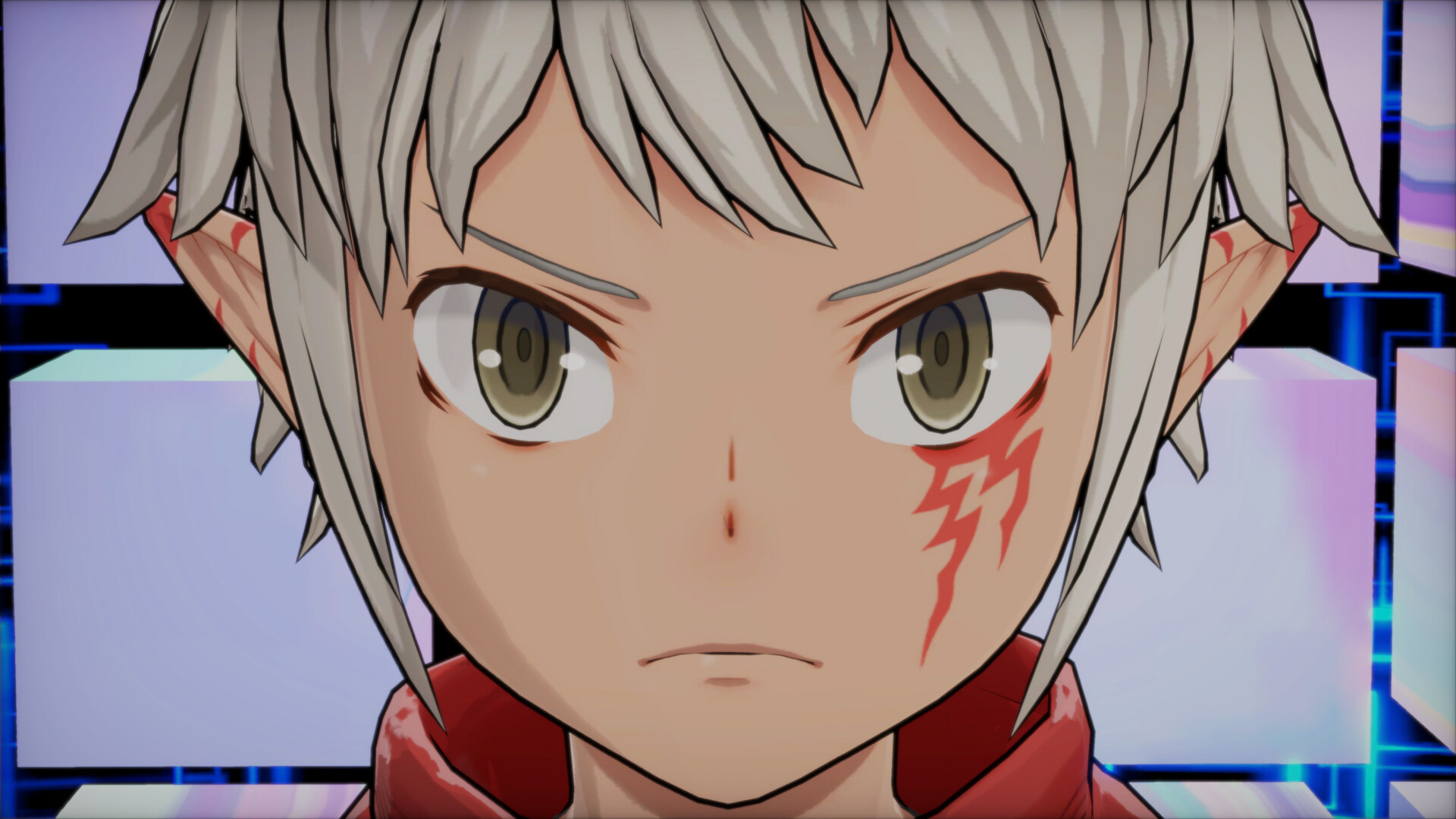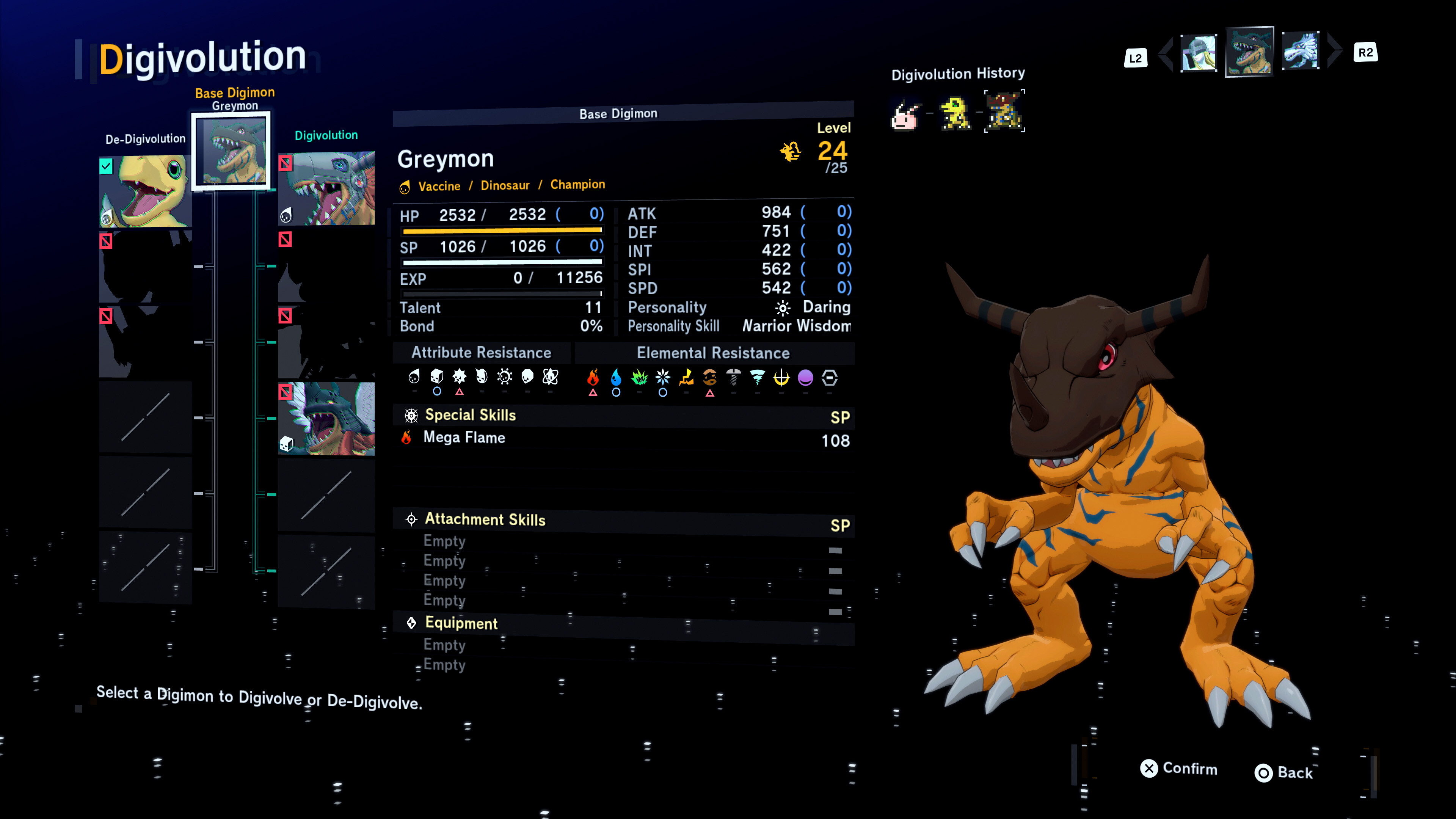
Digimon games haven’t always been the smoothest experiences-they’re typically made with limited resources, and that’s noticeable. The Digimon Story: Cyber Sleuth games were particularly problematic, suffering from really bad translation that was often hard to understand. Digimon Story: Time Stranger, which came after Cyber Sleuth, is definitely the most refined game in the series so far, but flaws begin to appear as you play.
The beginning of Time Stranger is masterfully crafted, immediately grabbing your attention with a dynamic and impressive introduction to the protagonist. You play as an agent for ADAMAS, a secretive group that investigates strange and supernatural events. When unusual occurrences begin above Shinjuku, you’re sent to look into them. Soon, Digimon appear, and things quickly spiral out of control, ultimately leading to the destruction of the world and sending the agent back in time eight years.
As a longtime fan, I always felt the previous games had a pretty clear goal: go back and try to stop bad things from happening, but without completely breaking the timeline. Now, Time Stranger really takes that concept and runs with it! While Cyber Sleuth and Hacker’s Memory dipped their toes into the Digital World, they spent most of their time having you run around digital networks. Honestly, those networks were kind of boring and repetitive – they were definitely the weakest part of those games. This time around though, it feels like a much bigger step forward.

In Time Stranger, we’re venturing into a complete version of the Digital World, specifically the server of Iliad. This is a different Digital World than the one seen in the anime and previous games. It features a wide range of beautiful locations, including dense forests, underwater caves, fiery volcanic forges, and much more.
The game’s areas are broken up into smaller sections instead of large, open spaces, which can sometimes feel restrictive, and navigating them isn’t always easy. Each section introduces a unique way to move around; in the Abyss Area, a helpful Submarimon lets you ride underwater currents, and the Gear Forest features a Palmon that uses its vines to swing you through the trees.
These tricks are frequently paired with brief, frustrating animations, and the problem intensifies as you progress. A specific late-game section requires you to provide certain responses to a Digimon to advance to the next platform; choosing the wrong answer sends you back to the beginning of the entire section. There’s no way to predict the correct answer, and each time you want to move forward, you have to start a conversation, select an option, and endure a 5-10 second animation while you’re moved. It’s mildly irritating initially, but it quickly becomes repetitive, and by the area’s conclusion, I felt like quitting the game altogether.

The latter part of the game involves a lot of revisiting areas you’ve already explored. While there are some minor changes each time, which lessen the feeling of doing the same thing over and over, it can still be frustrating. I believe returning to these locations does add to the story – the narrative is well-presented on these revisits – but the process could have been made much smoother and more fun with a bit of optimization.
Thankfully, the story is a strong point. It’s a really great narrative that explores surprisingly deep ideas, like coping with loss, discovering your place in life, and the responsibilities different groups have to one another when they live together. It does occasionally become a bit silly or childish, sometimes feeling like a Saturday morning cartoon, but it manages to find a good middle ground between being lighthearted and telling a sincere story. Plus, there are some enjoyable nods to previous Digimon series included.
To be honest, I wasn’t enjoying the game very much, especially because of the repetitive backtracking towards the end, until it reached the most exciting part. After that, the game was consistently great, with only a few minor issues – it occasionally gave me too many optional side quests right before the very end. There’s an incredible moment at the climax that, although hinted at throughout the game, is brilliantly executed, changing how you see everything that came before and making the whole experience much more satisfying in retrospect.

I really enjoyed the turn-based battles. They’ve been improved in subtle but important ways since Cyber Sleuth, where they were already pretty good. Now, things are more straightforward: elemental strengths and weaknesses are linked to the moves themselves, not the Digimon. This makes it much easier to follow what’s happening during a fight. Previously, each Digimon had both a type – like Fire or Water – and an attribute, such as Data or Virus. Now, Digimon only have an attribute, and their resistances and weaknesses depend on the elemental moves being used.
The updated battle system encourages you to try out various Digimon to build a versatile team prepared for anything. Getting and evolving Digimon is now simpler than before. You aren’t limited to specific save points for evolution – you can evolve them anywhere! While some Digimon still require significant training – needing multiple evolutions and devolutions to reach their full potential – the process is easier. Now, all Digimon in your storage gain experience, even those not actively in battle or on the Digifarm. Speaking of which, the Digifarm makes a return, but it’s entirely optional if you prefer not to use it.
My biggest problem with how Digimon evolve is that certain evolutions depend on specific personality traits – and there are more than a dozen of these! – and it’s difficult to change those traits. It happens randomly and takes a long time. The Digifarm can help a little, but it’s still not easy. This often meant I couldn’t evolve into the exact Digimon I wanted and had to choose a different one instead. On the bright side, it did let me see a lot of the game’s over 400 different Digimon, so it wasn’t all bad.

The biggest weakness of Time Stranger is how noticeable the budget constraints are. While the game features fully voiced dialogue – which is great – and some beautiful cutscenes, it often relies on fades to black instead of showing events happening on-screen. Some of the in-game cutscenes and animations also feel a little rough, making those moments seem less impactful. I’m still impressed by how much Media.Vision managed to achieve with what was likely a very limited budget, but the game could have benefited from a smaller scope to allow for more polishing and refinement.
The game’s rough edges are most noticeable in the minigames within Time Stranger, found in separate areas called the Outer Dungeons. These are hidden throughout the worlds, tucked away for players to discover, and each one presents a unique challenge. While some of these challenges are simple – such as defeating a strong enemy or evading enemies in the main game world – others are poorly designed and suggest the developers tried to do too much. One racing minigame, specifically, is incredibly difficult to control and nearly impossible to win – it’s practically unplayable as it stands. Though optional, the game would be improved by removing it entirely.
Currently, Digimon Story: Time Stranger represents a significant improvement over previous Digimon Story games, enhancing nearly every element. A lot of effort went into resolving issues found in earlier titles, and it largely succeeds in its presentation, battles, and narrative, though it doesn’t quite reach the level of a top-tier, high-budget game. Still, it’s a positive advancement for the series and is probably the best Digimon game released so far, hopefully paving the way for future installments that are even more refined, well-funded, and polished.
Read More
- Bitcoin’s Ballet: Will the Bull Pirouette or Stumble? 💃🐂
- Can the Stock Market Defy Logic and Achieve a Third Consecutive 20% Gain?
- Dogecoin’s Big Yawn: Musk’s X Money Launch Leaves Market Unimpressed 🐕💸
- Deepfake Drama Alert: Crypto’s New Nemesis Is Your AI Twin! 🧠💸
- LINK’s Tumble: A Tale of Woe, Wraiths, and Wrapped Assets 🌉💸
- XRP’s Soul in Turmoil: A Frolic Through Doom & Gloom 😏📉
- SentinelOne’s Sisyphean Siege: A Study in Cybersecurity Hubris
- Unbelievable News: Brazil’s B3 Stock Exchange to Unveil a Stablecoin Next Year!
- Ethereum’s DeFi Domination: Why Rivals Are Feeling the Squeeze 🤑
- Zcash Climbs 12% in an Unexpected Heroic Comeback-Even Coins Have Feelings, You Know?
2025-10-01 17:18